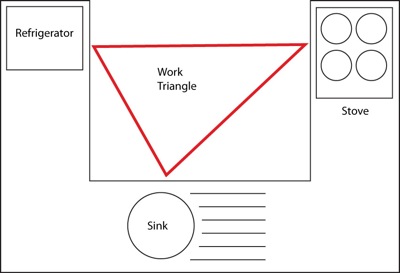Do You Hate to Study?
No doubt about it. To be successful, you need to read and apply instructions. You need to know how to learn a topic and then use what you learn on your job or in life.
However, if you get a headache or feel bored or frustrated while studying, you might quit.
One reason people get those feelings and fail to learn certain subjects is they try to study the subjects without seeing the actual objects in front of them.
“You’re trying to teach this fellow all about tractors and you’re not giving him any tractors. Well, he’s going to wind up with a face that feels squashed, with headaches and with his stomach feeling funny. He’s going to feel dizzy from time to time and very often his eyes are going to hurt.” — L. Ron Hubbard
Which would you prefer? A three-hour lecture on how to train dogs, or a workshop where you work with a real dog? Which method would work best for you?
Unfortunately, education sometimes fails to provide the “mass” or physical objects to show you how things actually work.
For example, you listen to a lecture about managing employees with no demonstrations. You read the legal requirements for building a garage with no pictures of garage parts. You try to learn how to set up a website with a book, but no computer.
Without the objects of the subject, you eventually feel dizzy or get headaches. Your eyes might hurt. You might feel bored, frustrated, angry or annoyed.
If you think about it, some of the most difficult subjects involve the fewest number of physical objects. Most people do not enjoy studying laws, computer languages, tax rules, investing or financial management because very few objects are involved.
Yet you can enjoy studying even these subjects if you can see or create a demonstration to envision how something works.
How to Do Demonstrations
Of course, the best physical object you can use to learn is the object itself. You learn about an airplane part while holding the part. You learn about chemical reaction when you can put on your goggles and create the reaction.
Fortunately, you can use another method using small objects on your desk to replace the actual objects.
“A ‘demonstration’ or ‘demo’ is usually done with a ‘demo kit’ which consists of various small objects such as corks, caps, paper clips, pen tops, rubber bands, etc. The student demonstrates an idea or principle with his hands, the paperclips on his desk, etc.” — L. Ron Hubbard
For example, you are reading about a complicated law that involves the government, two companies and five individuals. You feel bored and want to get a snack, but instead, you demonstrate the problem. You use a coffee cup to represent the government, two wooden blocks to represent the two companies and five rubber bands to represent the individuals. You move the objects around showing the interactions. The legal problem now seems simple and you are no longer bored.
“Sketching is also a part of demonstration and part of working things out.” — L. Ron Hubbard
For example, you are learning how to design kitchens and read that you should use a triangle between the refrigerator, sink and stove. This makes no sense and you start to get a headache. You realize you need a demonstration so you pull out a piece of paper and draw little boxes for the refrigerator and stove, a circle for the sink and the points of a triangle between them.
It now makes sense. You understand the kitchen work triangle. Your headache goes away and you get excited to design your first kitchen.
Summary
Whenever you study, watch out for these five feelings.
1. Headaches
2. Dizziness
3. Feel squashed, such as head pressure
4. Stomach feels funny
5. Eyes hurt
When you get one of these feelings, do not give up. Do not continue to study in spite of the feeling. Instead, go look at the object or demonstrate it until the feeling goes away.
L. Ron Hubbard discovered more study techniques you can use to be a highly-successful student and master any subject. As a result of this study technology, you will experience joy while learning. You’ll feel confident and excited about the subject. Best of all, you will successfully use what you have learned in the real world. Learn more techniques for successful studying.
